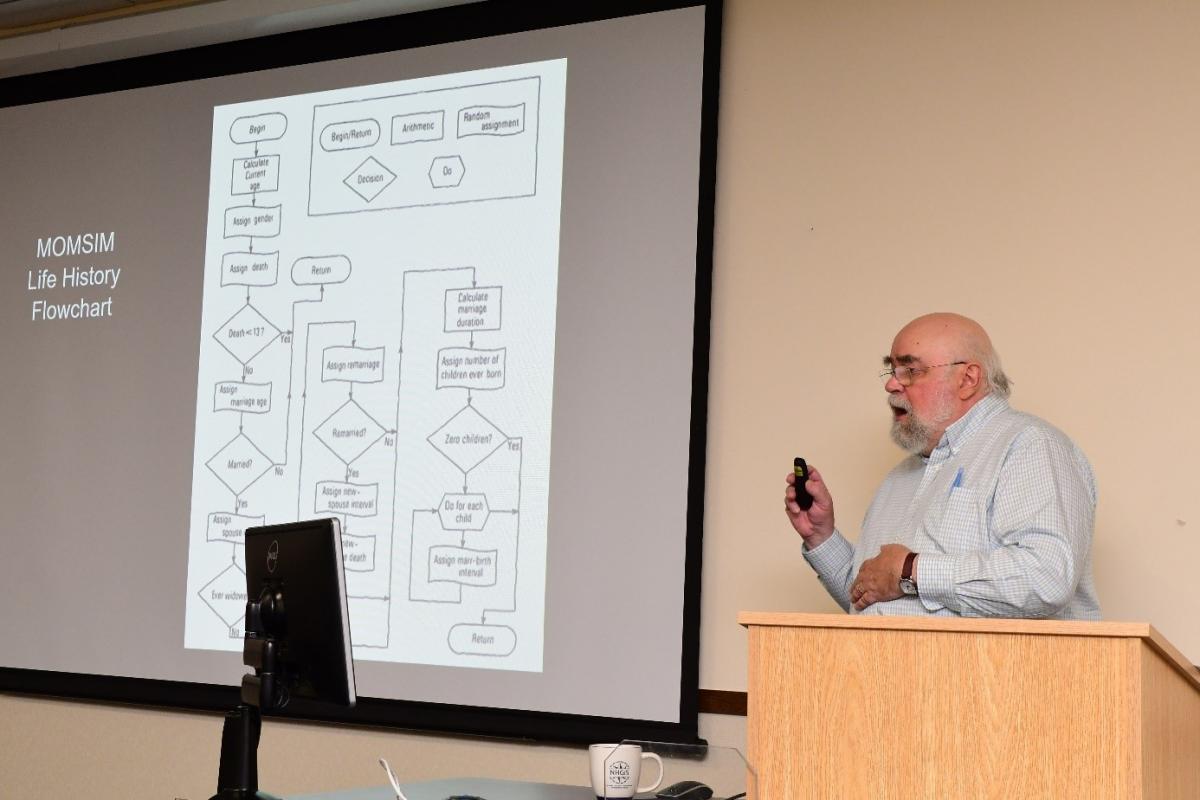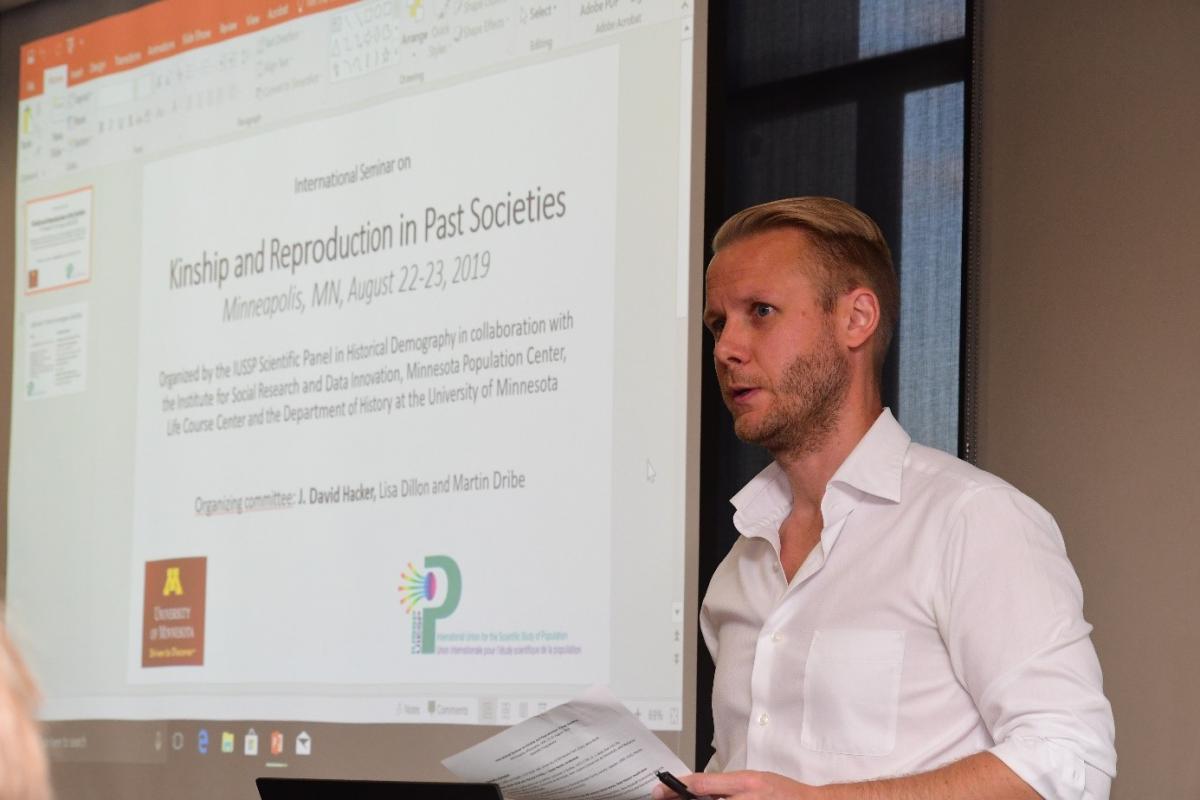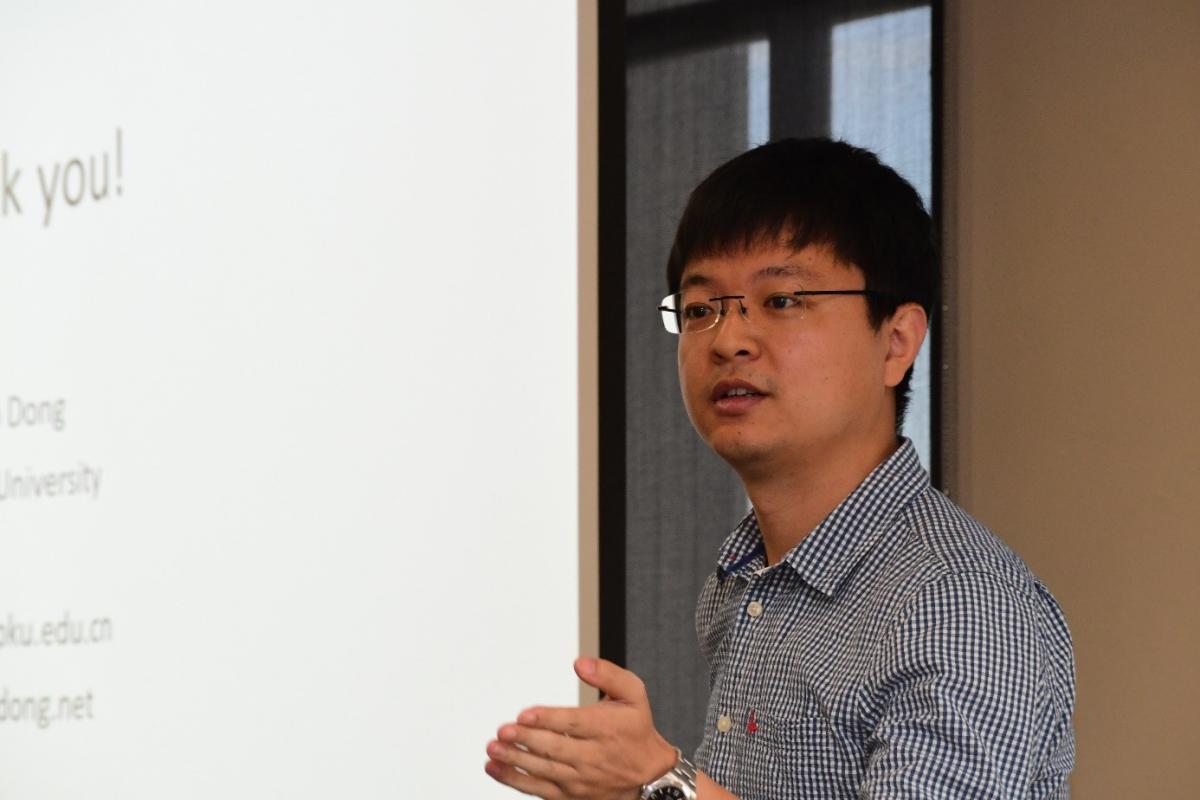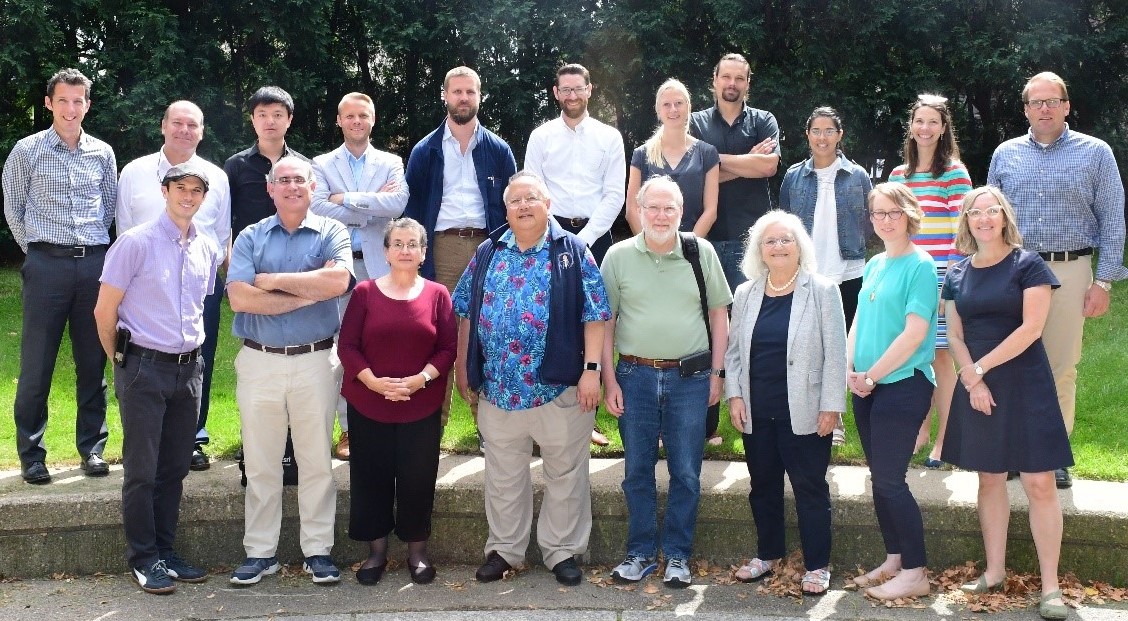Kinship and Reproduction in Past SocietiesMinneapolis (Minnesota), United States, 22-23 August 2019
Organizing committee: J. David Hacker (University of Minnesota), Lisa Dillon (Université de Montréal), Martin Dribe (Lund University).
The IUSSP Scientific Panel on Historical Demography and the Minnesota Population Center organized a Seminar on Kinship and Reproduction in Past Societies, at the University of Minnesota in Minneapolis (USA) on 22-23 August 2019. The seminar was sponsored by the Institute for Social Research and Data Innovation, Minnesota Population Center, Life Course Center and the Department of History at the University of Minnesota.
Research in anthropology and evolutionary demography has emphasized the importance of kin for reproductive success. Grandmothers, and to a lesser extent grandfathers, can help maximize the number of surviving grandchildren through increased fertility of their daughters and improved survival of their grandchildren. Some evolutionary demographers contend that the grandmothers’ post-menopausal contribution for reproductive fitness is an important reason for the long post-reproductive life span of humans. Research in historical demography has also highlighted the important role of kin on fertility and other demographic outcomes, especially in complex-family societies such as East Asia with high levels of intergenerational coresidence. A modest number of studies have also explored the impact of kin on fertility in historical Western societies; however, most research on families in the Western context has focused on the role of socioeconomic and cultural variables and decision making within the nuclear family. Yet coresidence is not necessary for kin influence on fertility behavior. Having grandmothers or other kin alive and living nearby may be just as important as having them in the household, especially if the mechanisms by which kin influence fertility include physical help with childrearing or socialization and transmission of attitudes and behaviors. Recent research has shown strong patterns of intergenerational transmission of fertility in Western contexts during and after the fertility transition, suggesting a major role for kin in adapting to economic change, as well as continuing traditional fertility behaviors or forming innovative new behaviors.
The seminar brought together 20 participants from Canada, China, Germany, Hong Kong, Mexico, the Netherlands, Spain, Sweden, and the United States. 15 papers were presented dealing with different contexts in both time and place. Several of the papers studied kinship beyond coresidence and presented research that made innovative use of new data sources to study proximity outside the immediate household and the different roles played by kin in different contexts.
Steven Ruggles gave an inspiring lunch talk where he provided an historical overview of some prominent research on kinship and coresidence in historical perspective as well as a personal account of his work on microsimulation going back almost 40 years. The seminar showcased the advancement of historical demographic research on kinship and its role for reproductive behavior. The discussions and presentations also made it very clear that the relationship between kinship availability and reproduction is far from simple and requires both carefully contextualized empirical studies and multidisciplinary theoretical perspectives.

See also:



All photos by Evan Roberts/Catherine Fitch. |

